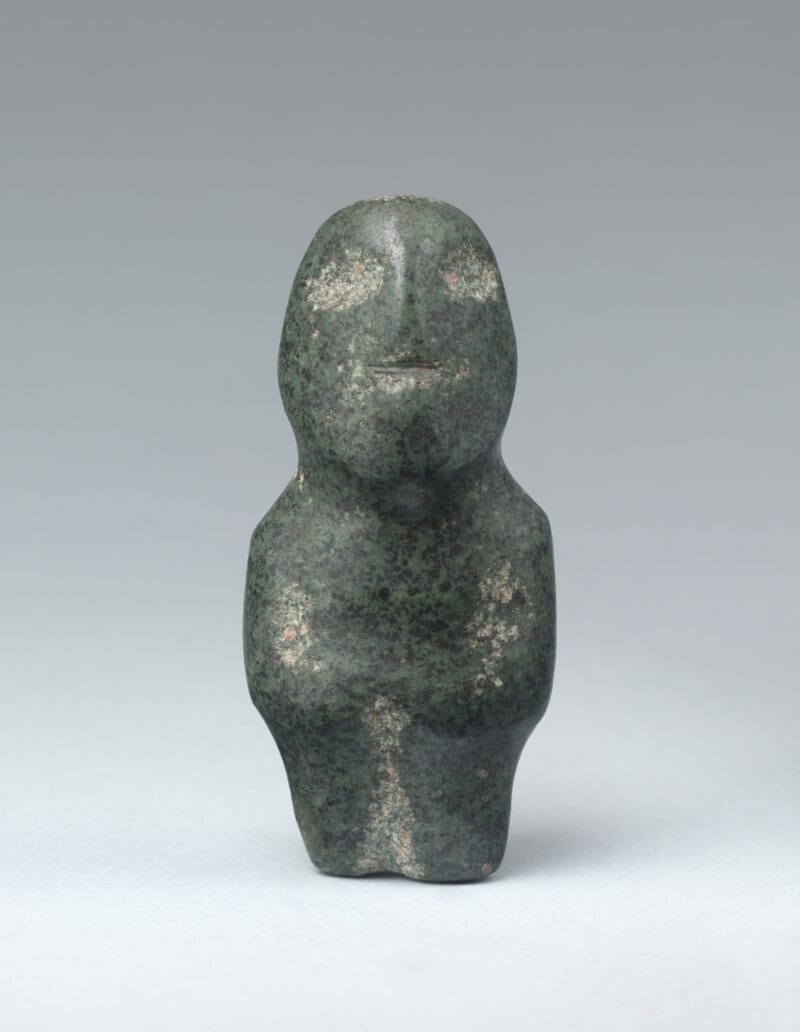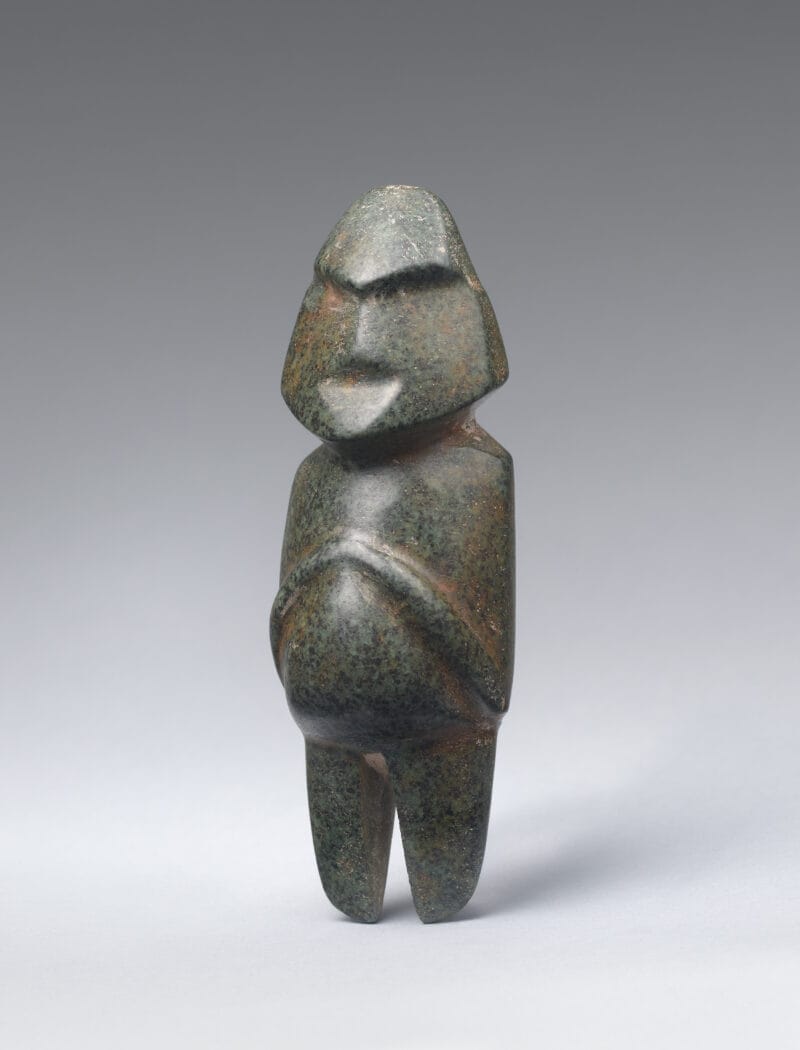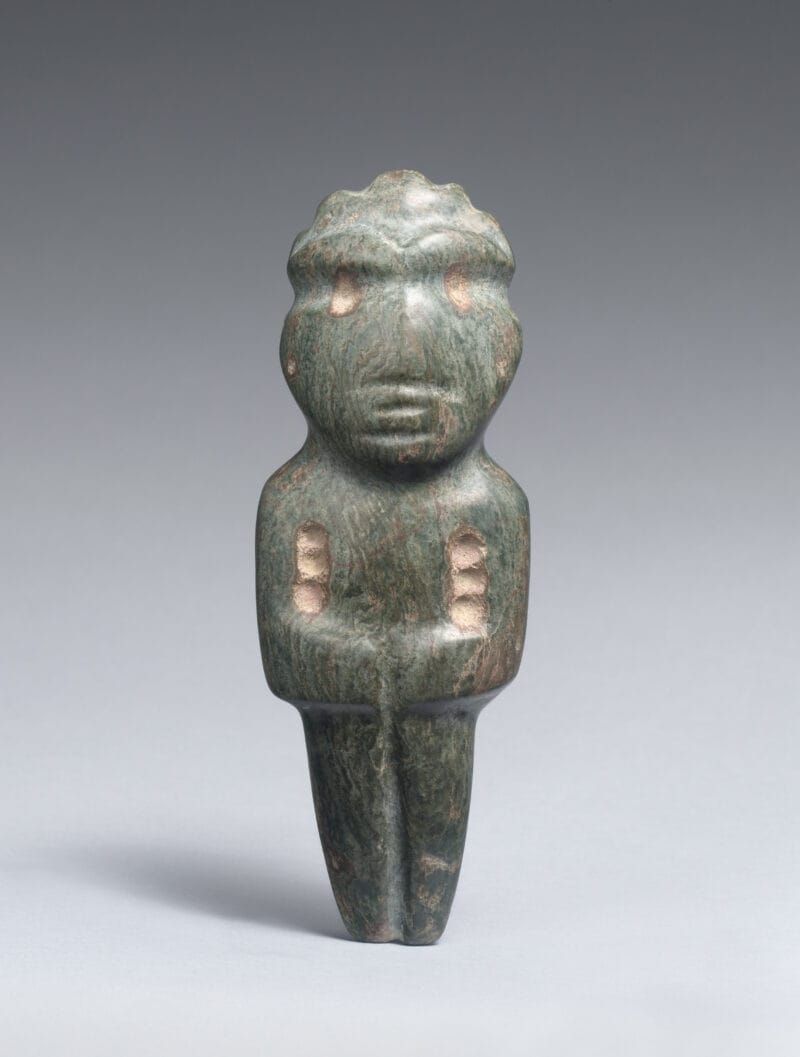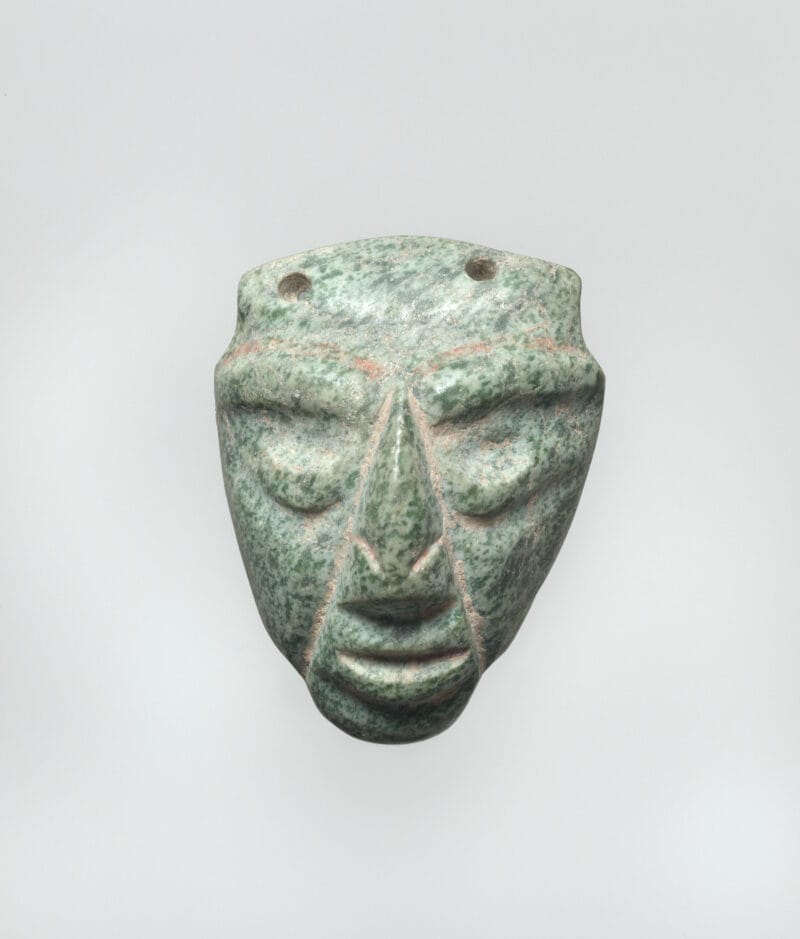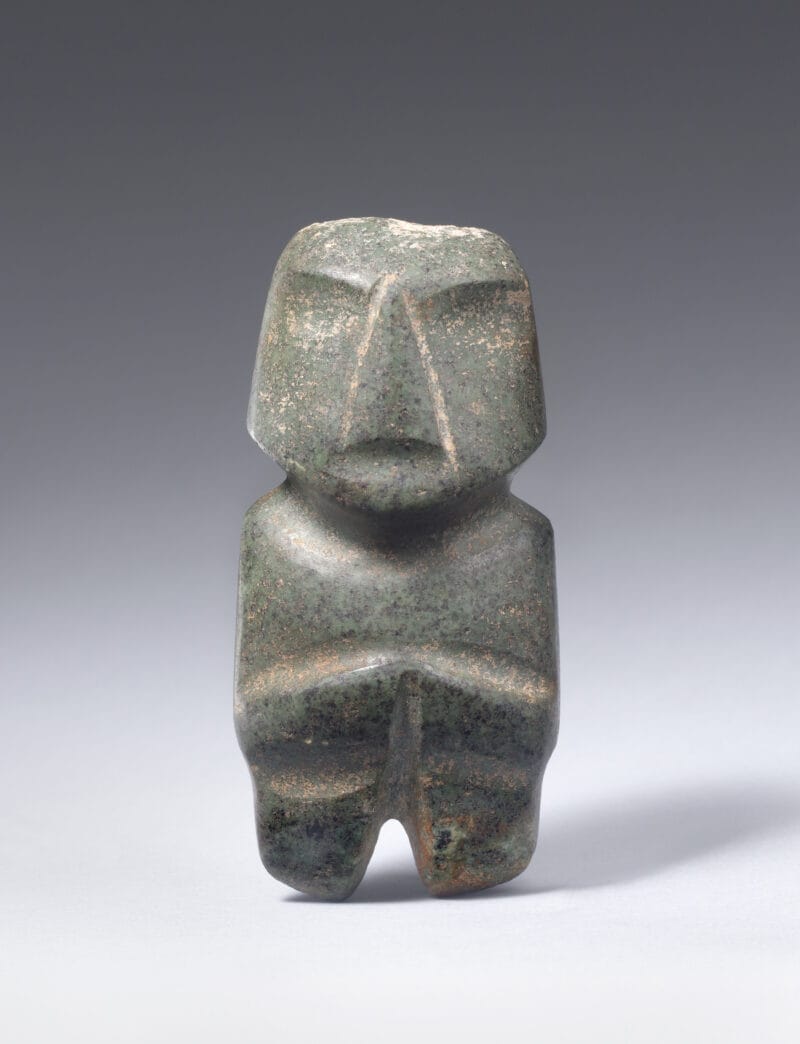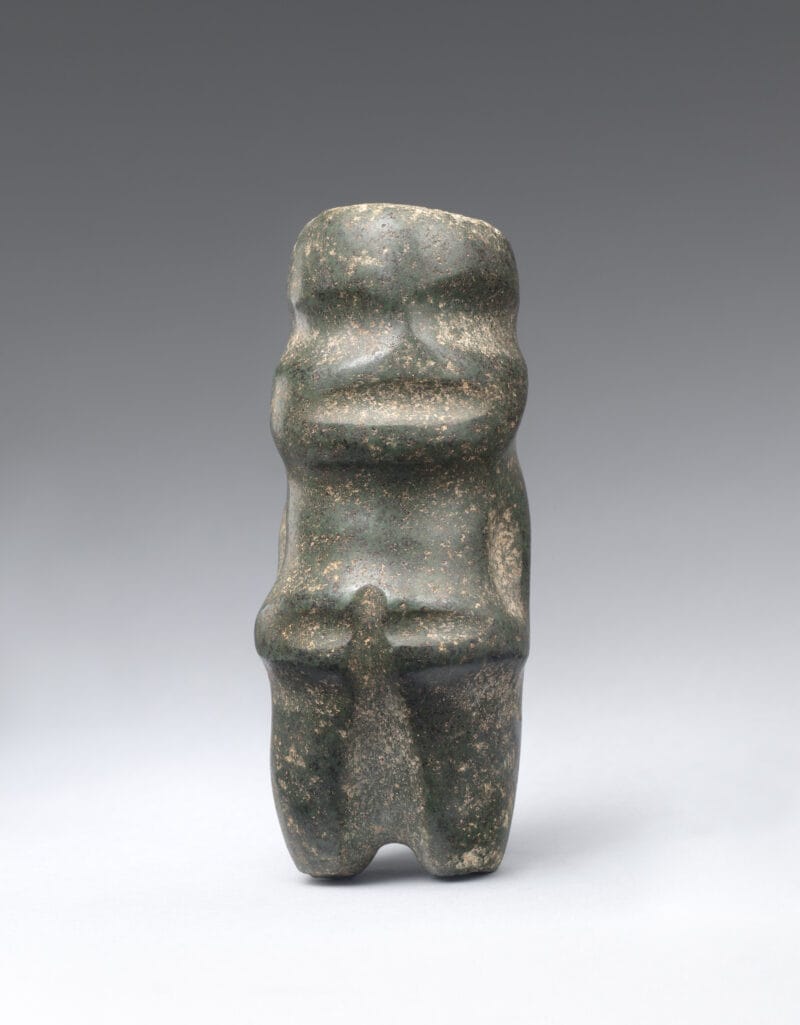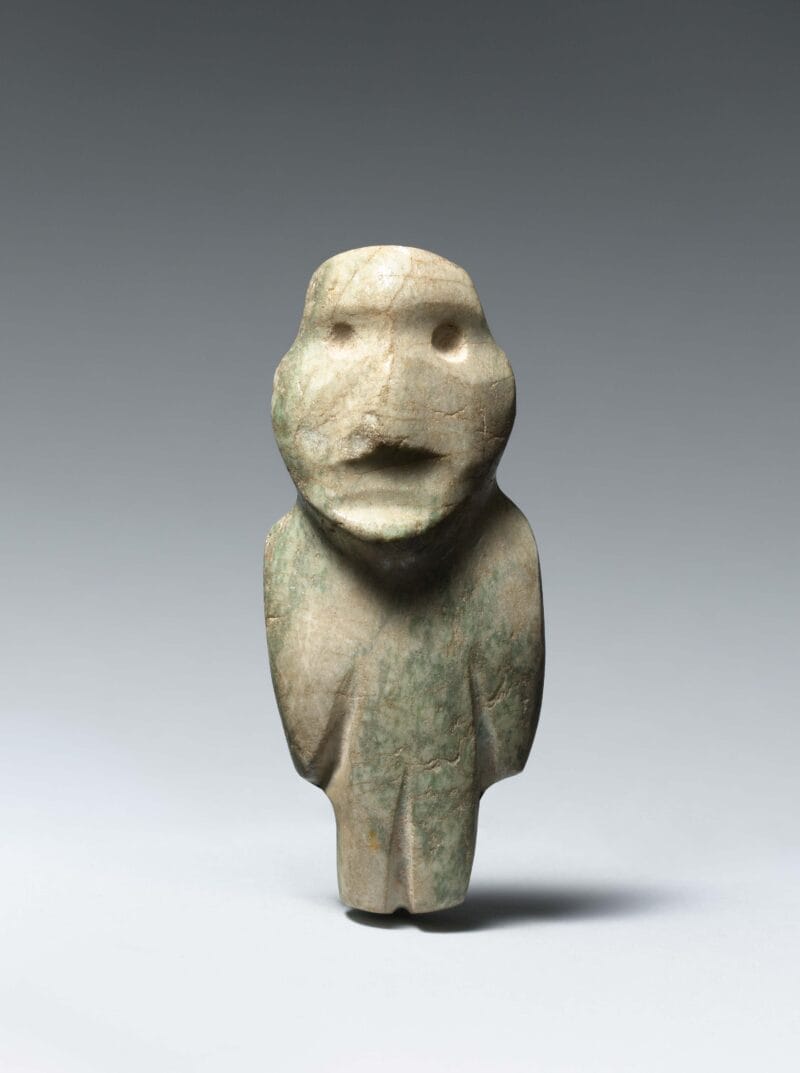
About the Object
The emphasized eyebrows, rounded eyes/head, and defined mouth of this pendant figure, carved from light green stone, suggest the similar attributes of M-24- or M-26-type figures, first outlined by Carlo Gay, who pioneered systematic study of Mezcala-Chontal art. These attributes likely place the creation of this object within the later phase of Mezcala stylistic development. Recovered Mezcala pendants featuring human figures may have held important functions in Mezcala tradition as amulets or charms rather than what scholars call “discoidal pendants,” which instead were probably used only as personal ornaments.
Additional Information
A great deal remains unknown about Mezcala-Chontal traditions originating in what is now the Mexican state of Guerrero because of a lack of archaeological excavation and analysis. However, interest in such extraordinary abstract forms has been generated over the past few decades, and scholars are now beginning to glean more knowledge about these remarkable traditions and their context within the broader Mesoamerican world.
Private Collection, Colorado;
[Ron Messick Fine Arts, Santa Fe, NM];
The Jan T. and Marica Vilcek Collection, 2003-2010;
Gift to The Vilcek Foundation, 2010;
Related Objects
You may also be interested in
Juan Pablo Contreras composes classical music with the sounds of Mexico

Felipe Baeza

Juan Pablo Contreras


